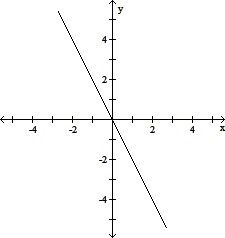Evaluate the surface integral of the function G over the surface S.G(x, y, z) = x + z; S is the surface of the wedge formed from the coordinate planes and the planes  and y = 5
and y = 5
A. 63 + 45
B.  + 45
+ 45
C. 72 + 45
D. 63 + 15
Answer: A
You might also like to view...
Find the equation of the parabola which has the given vertex V, which passes through the given point P, and which has the specified axis of symmetry.V(1, 2), P(0, 1), horizontal axis of symmetry
A. (y - 2)2 = -(x - 1) B. (x - 2)2 = -(y - 1) C. (y - 2)2 = x + 1 D. (y - 2)2 = x - 1
The figure shows the graph of a function. At the given value of x, does the function appear to be differentiable, continuous but not differentiable, or neither continuous nor differentiable?x = 0
A. Differentiable B. Continuous but not differentiable C. Neither continuous nor differentiable
Simplify.(-i)38
A. -i B. 1 C. i D. -1
Find the area enclosed by the graph of the polar equation r = 4 sin 3[]
What will be an ideal response?